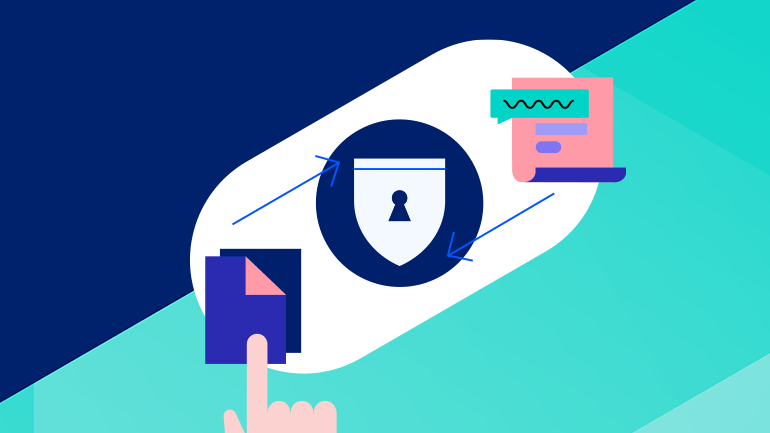The Importance of Auditor-Certified Compliance in MFT

File transfers remain a critical enabler in compliance frameworks. Learn why proper MFT implementation isn’t just about avoiding penalties—it’s about building verifiable trust in your data-handling practices.
The clock is ticking in the meeting room as your organization’s auditor flips through their extensive checklist, finally landing on the section about file transfer security. Their expression hardens. “I need to see documentation for how you’re securing sensitive data transfers,” they say, already looking skeptical. That familiar knot forms in your stomach—the one that appears whenever file transfer compliance comes up.
It’s a moment of truth that every IT professional dreads. Despite all the focus on flashy security tools and threat detection systems, it’s often the glossed-over plumbing pushing data between these systems that becomes your compliance Achilles’ heel. Why? Because regulators have figured out what many organizations haven’t: data in motion is data at risk, and “we have a process for that” doesn’t cut it without proper visibility and documentation.
Why Compliance in File Transfers Isn’t Just Another Checkbox
Let’s be honest: Compliance often gets overlooked for more interesting work topics. But here’s the reality check: The stakes are stratospheric. When you’re shuffling sensitive data between systems, partners and customers, you’re essentially handling digital dynamite. One mistake—one unencrypted transfer, one unauthorized access—and you’re facing:
- Regulatory fines that worry your CFO they’ll be writing a blank check to a law firm
- Legal consequences that keep your general counsel awake at night
- Reputational damage that no amount of PR spin can fix
- Operational disruptions that bring operations to a halt for a fire drill
The True Cost of Non-Compliance
If numbers speak louder than words, these ones are screaming through a megaphone:
| Compliance Failure | Potential Consequences |
|---|---|
| HIPAA Violation | Up to $2,134,831 per violation category annually (2024 adjusted maximum for Tier 4 violations) |
| GDPR Breach | Up to €20 million or 4% of global revenue—whichever is higher |
| PCI DSS Non-Compliance | $5,000 to $100,000 per month in penalties |
| SOX Violation | Up to $5 million in fines and up to 20 years in prison for executives |
And that’s before counting the cost of breach remediation, legal fees and the incalculable brand damage.
The Technical Anatomy of Compliance-Ready File Transfers
When auditors evaluate your file transfer infrastructure, they’re digging far deeper than most IT teams anticipate. According to the NIST National Cybersecurity Center of Excellence, organizations need robust controls for secure data transfers. This is where homegrown solutions and manual scripts fall dangerously short.
Just imagine the time it would take to piecemeal together an audit log for every file transfer across your team. But it’s not enough to say, “We use SFTP.” Auditors are looking for details about your protocol, certificate and authentication management that an unmanaged solution will leave you guessing about.
The difference between “we have encryption” and “we have auditable encryption” is vast. One satisfies an executive’s casual question; the other satisfies an auditor’s rigorous examination.
Why Third-Party Certification Is Your Security Blanket
Having your MFT solution validated by independent auditors isn’t just nice to have—it’s the difference between “we think we’re compliant” and “we can prove we’re compliant.” And when an actual auditor comes knocking, that distinction is everything.
Here’s why third-party certification matters:
Independent Verification > Trust Me Bro
When your file transfer vendor says, “Our solution is secure,” that leaves due diligence up to you to find out what “secure” means to them and what they base their own stamp of approval on. When an independent auditor with professional skepticism and rigorous testing methodology says, “Your file transfer process is secure”—that’s evidence.
The difference is substantial: vendor marketing material claims might not have evidence to back them up, while auditor certifications are documented proof based on rigorous testing against established standards. This distinction between your file transfer vendor enabling compliance and being certified becomes critical when you’re responsible for protecting your organization’s most sensitive data and need verifiable assurance—not just promises—that your security controls actually work as intended.
The Certification Types: Not All Validations Are Created Equal
Understanding the hierarchy of certifications can help you prioritize which ones matter most for your situation:
- Industry-specific certifications: For healthcare, HITRUST and HIPAA certifications carry more weight than generic security stamps. In the financial industry, PCI can make all the difference.
- Continuous monitoring certifications: SOC 2 Type II (which evaluates controls over time) provides stronger assurance than point-in-time assessments like ISO 27001, which only verifies that controls existed on assessment day.
- Technical certifications: FIPS 140-2 validation for cryptographic modules is the gold standard for proving your encryption isn’t just “encryption-like functionality.”
A truly robust MFT solution should hold multiple certifications across these categories, giving you maximum flexibility to address various audit requirements.
💡 Compliance Pro Tip: When evaluating MFT solutions, don’t just ask “Are you compliant with X?” Instead, ask “Can you provide your most recent independent audit reports for standards X, Y and Z?” The response will tell you everything you need to know about their actual compliance posture.
Core Security Features That Make Auditors Smile
Auditors have seen it all—the good, the bad and the “how are you still in business?” When they evaluate an MFT solution, they’re looking for substantive security controls that actually protect data, not just checkbox compliance. Here’s what separates truly compliant solutions from pretenders:
Encryption That Actually Deserves the Name
Proper MFT solutions like Progress MOVEit software implement robust cryptographic protections, including strong transport encryption with TLS 1.2+ protocols and FIPS 140-2 validated AES-256 encryption for data at rest.
The implementation details matter enormously. For example, storing encryption keys in the same database as the encrypted data might technically satisfy the “encryption at rest” checkbox, but it’s essentially security theater that won’t fool any experienced auditor. Proper key management architecture keeps encryption keys physically and logically separated from the data they secure.
For organizations handling particularly sensitive data, integrating with modern encryption key management systems provides that extra layer of assurance that auditors love to see—demonstrating that you’re not just meeting minimum requirements but implementing security best practices.
Authentication Built for the Real World
The days of shared login credentials should be as extinct as dial-up internet. Modern MFT systems recognize that authentication is your first defense against unauthorized access. This means implementing multi-factor authentication that genuinely blocks attacks instead of just checking a compliance box.
Role-based access controls that implement least privilege principles restrict users to access only what they legitimately need. When your MFT solution integrates with enterprise identity providers, you can strengthen security through centralized authentication management while maintaining specific controls for file transfer operations, as demonstrated in the MOVEit approach to regulatory compliance and MOVEit Cloud’s security architecture.
Audit Trails Worth Their Name
When your auditor asks, “Who did what and when,” answering with anything less than precise detail is a compliance failure. This is where many file transfer solutions fall embarrassingly short.
A truly compliant MFT system creates a comprehensive digital chain of custody for every file. This includes:
- Granular activity logging: Detailed logs of all file activities (uploads, downloads, views) with user attribution
- Secure audit records: Properly secured logs that maintain data integrity as required by standards like SOC 2 and HIPAA
- Chain of custody documentation: Complete history of file access, movement and modifications
- Automated retention policies: Configurable retention schedules in line with data governance policies and compliance requirements
The technical implementation matters significantly here. Properly secured logs with accurate timestamp information and synchronization help demonstrate that your audit timeline is trustworthy and verifiable—critical for both compliance reports and security incident investigations.
The Bottom Line: Compliance Is a Competitive Advantage
Here’s something that might surprise you: Implementing proper compliance in your file transfers isn’t just about avoiding fines—it can actually become a competitive edge. When you can confidently tell customers, partners and stakeholders that your data-handling practices meet rigorous standards, you’re not just checking a box—you’re building trust.
And in today’s data-sensitive world, trust might be the most valuable currency of all.
Learn more about how MOVEit MFT can help you facilitate secure file transfers in compliance with the regulations and standards essential to your business.

Adam Bertram
Adam Bertram is a 25+ year IT veteran and an experienced online business professional. He’s a successful blogger, consultant, 6x Microsoft MVP, trainer, published author and freelance writer for dozens of publications. For how-to tech tutorials, catch up with Adam at adamtheautomator.com, connect on LinkedIn or follow him on X at @adbertram.
